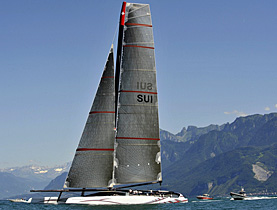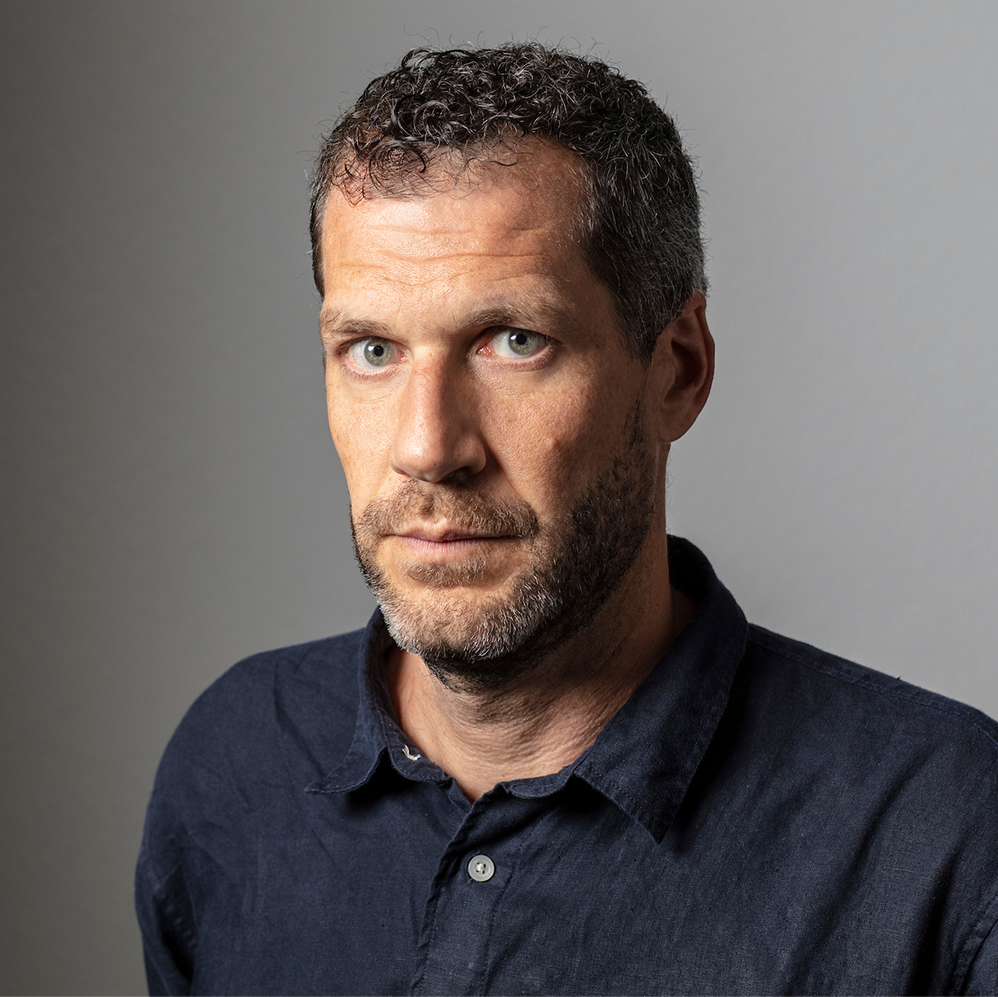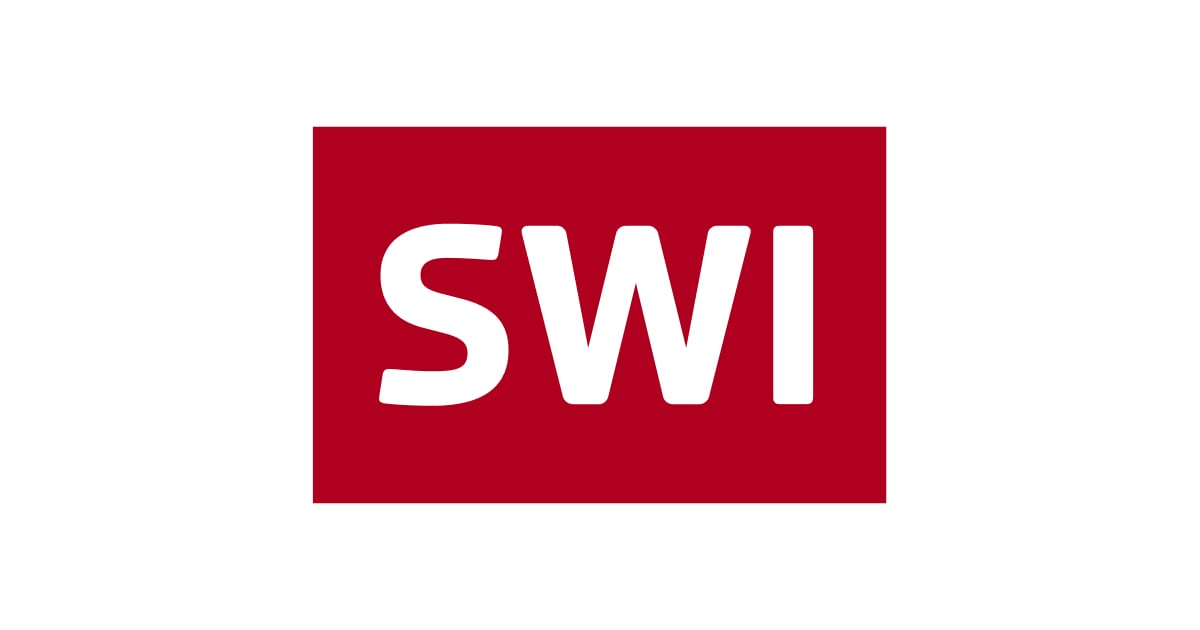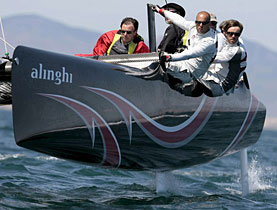Alinghi defends use of engine to trim sails

The head of the Alinghi sailing syndicate, billionaire Ernesto Bertarelli, has defended the use of a controversial engine to trim the sails of his new catamaran.
Bertarelli, quoted by the Associated Press, also denied that the ongoing legal dispute between Alinghi, the defending champion of the America’s Cup, and challenger Oracle Racing has damaged the reputation of the competition.
The Alinghi team on Thursday showed journalists around Alinghi 5, which has an engine that the United States Oracle Racing team says is against the spirit of the cup.
Bertarelli said the catamaran was designed in line with the Deed of Gift, the 19th century document that governs the basic rules of the event.
“We basically felt that we could not restrict in any way our position to use ballast, to use an engine… to use anything because the Deed of Gift is very straightforward with regard to the fact that it’s as much a technology race as it is a sailing competition,” he said.
“It’s not about how much it costs. It’s not about who’s winning in court. It’s about who’s going to be the fastest on the water and who can bring together the strongest team and the best technology.”
Helicopter transport
Alinghi 5 has been sailing on Lake Geneva since the beginning of the week and was presented to the media before its transport by helicopter to the Mediterranean at the beginning of August.
In the port of Le Bouveret on the eastern shores of the lake, Alinghi cuts a striking image with its 50-metre high mast, making surrounding pleasure yachts look insignificant.
Alinghi 5 was taken there by helicopter from Villeneuve, about 20 kilometres away, where it was constructed.
Sailors, engineers and designers are unanimous: the results of the first tests were way above expectations.
“Getting used to the yacht was quicker than foreseen,” commented Alinghi’s chief designer Rolf Vrolijck. “The team which designed the boat did a good job.”
This impression was confirmed by Yves Detrey, a crew member. “We only went out with the boat in calm weather conditions but we were very surprised that everything functioned so well from the first day.”
Cat power
Like the other members of the crew, Detrey was impressed with the power of the catamaran, which is 27 metres long, 23 metres wide and composed of 30,000 cubic metres of carbon fibre and has a main sail of 1,000 square metres.
“You really feel how the boat is working. We’ll still need some time to have total confidence but we have no fear about our first outing on the sea,” he said. Alinghi will take this step at the end of August.
The journey to the Mediterranean, scheduled for around ten days time, will see the catamaran transported above the Alps and over the Great St Bernard Pass and land in the Italian port of Genoa. It’s a challenge that only the world’s largest helicopter, the Mil Mi-26, can meet.
The final destination is not yet known, with the venue for the 33rd America’s Cup in February 2010 only being announced on August 6. The secret is being well kept.
In the two-year-long battle between Alinghi and Oracle Racing, every bit of information is carefully distilled drop by drop.
Bertarelli cleverly keeps the duel alive off the water. “Our boat is impressive. Oracle should have some small concerns. I hope they will have the courage to face us but I am almost certain that they will once again contest our choice of venue.”
Wide interpretation
The Deed of Gift states that it is up to the defending champion to choose where the races take place. But the document, which dates back more than 150 years, leaves a large margin for interpretation. And this flaw is widely used by the lawyers of both two sides.
According to Bertarelli, the duel between Alinghi and Oracle brings together two diametrically opposed ideas of multi-hull yachting.
“The approach of the Americans is traditional. They have tried to adapt ocean-going boats to build their trimaran. We, on the other hand, were inspired by small lake boats to construct our catamaran. Inevitably, one of the two boats will be quicker.”
More than 2,000 Swiss companies were involved in the design and construction of Alinghi 5. Leading the way once again was the Federal Institute of Technology in Lausanne.
“Close cooperation”
“We’ve had close cooperation since the beginning of the Alinghi adventure,” recalls the Institute’s director Patrick Aebischer. “The challenge was even greater this time because the forces on the materials are enormous with such a large-sized boat.”
Six laboratories at the Institute were actively involved in the development of the catamran.
“For a school like ours, taking part in such an adventure is really motivating. And this year our logo will be easily visible on the mast,” Aebischer enthuses.
He adds that Swiss research as a whole has benefited from the advances made over the past ten years.
“When you push technology to its limits, you can inevitably adapt the applications in other fields, for example in the biomedical field or space technology.
Samuel Jaberg in Le Bouveret, swissinfo.ch (Adapted from French by Robert Brookes)
The America’s Cup is the oldest and most prestigious trophy in the sport of sailing. It is awarded to the winner of a series of regattas between the defender of the cup and the challenger.
The competition, held for the first time in England in 1851, was won by America, with a boat from the New York Yacht Club. The club held the cup for 132 years until it was beaten in 1983.
By defeating the defending champion, New Zealand, in 2003, Alinghi brought the trophy for the first time to Europe.
The 33rd America’s Cup is due to take place in February 2010 at a place to be defined.
In July 2007 after Alinghi’s victory in the 32nd America’s Cup, Alinghi boss Ernesto Bartarelli chose a challenge from Spain as the “Challenger of Record” for the 33rd event. Oracle Racing accused the Swiss syndicate of fixing the rules in their favour.
Basing its claims on the “Deed of Gift” document, Oracle said the club representing the Spanish challenge was fictitious and did not conform with holding an annual ocean regatta.
After a long procedure and contradictory legal decisions, the Court of Appeal of New York State ruled in Oracle’s favour on April 2, 2009 and obliged Alinghi to negotiate with the American challenger on the terms of the next America’s Cup.
The battle in the courts was not over. Oracle accused Alinghi of unilaterally adapting the rules. The Swiss counter-attacked and demanded the American court to disqualify Oracle.
On Tuesday, the judge in charge of the case called on the Swiss and the Americans to restart mediated talks, which they accepted.

In compliance with the JTI standards
More: SWI swissinfo.ch certified by the Journalism Trust Initiative















You can find an overview of ongoing debates with our journalists here . Please join us!
If you want to start a conversation about a topic raised in this article or want to report factual errors, email us at english@swissinfo.ch.